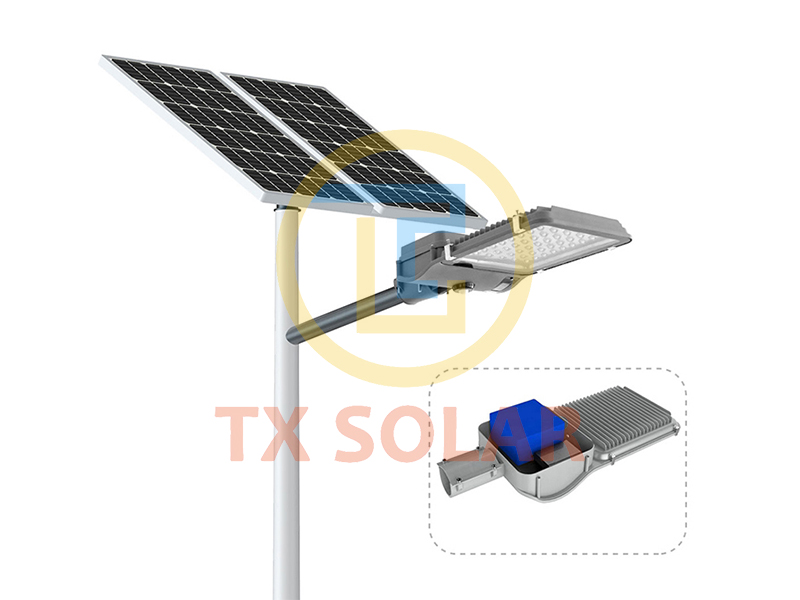Split solar street light is an innovative solution to the problems of energy saving and environmental sustainability. By harnessing the sun’s energy and illuminating streets at night, they offer significant advantages over traditional street lights. In this article, we explore what makes up split solar street lights and offer our own take on their viability as a long-term solution for illuminating cities.
The composition of the split solar street light is quite simple. It consists of four main components: solar panel, battery, controller and LED lights. Let’s take a deeper look at each component and what it does.
Solar panel
Start with a solar panel, which is often mounted on top of a light pole or separately on a nearby structure. Its purpose is to convert sunlight into electricity. Solar panels consist of photovoltaic cells that absorb sunlight and generate direct currents. The efficiency of solar panels plays a vital role in determining the overall performance of street lights.
Battery
Next, we have the battery, which stores the electricity generated by the solar panels. The battery is responsible for powering the street lights at night when there is no sunlight. It ensures continuous lighting throughout the night by storing excess energy generated during the day. The capacity of the battery is an important consideration because it determines how long the street light can run without sunlight.
Controller
The controller acts as the brain of the split solar street light system. It regulates the current flow between the solar panel, battery, and LED lights. The controller also controls the hours of the street light, turning it on at dusk and off at dawn. In addition, it also adopts various protection measures, such as preventing the battery from overcharging or over-discharging, thereby prolonging the service life of the battery.
LED light
Finally, LED lights provide the actual lighting. LED technology offers several advantages over traditional lighting technologies. LEDs are energy efficient, durable, and environmentally friendly. They require less maintenance and have higher lumen output, ensuring brighter, more even lighting. The LED lights are also highly adaptable, with adjustable brightness levels and a motion sensor to save energy when no one is around.
In my opinion
We believe that split solar street lights are a promising solution to urban lighting needs. Their composition makes optimal use of renewable and abundant solar energy. By reducing dependence on traditional energy sources such as fossil fuel power generation, split solar street lights help mitigate the harmful effects of greenhouse gas emissions and contribute to the fight against climate change.
In addition, the modular design of the split solar street light provides flexibility and easy installation. They can be easily customized to suit different lighting requirements and locations. Being independent of the grid also means they are immune to power outages and reliable even in emergencies.
The cost-effectiveness of split solar street lights is another advantage worth highlighting. Although the initial investment may be higher compared to traditional street lights, the long-term savings from reduced electricity and maintenance costs make them economically viable. Additionally, advancements in solar technology and mass production continue to reduce overall costs, making split solar street lights an economically attractive option for cities worldwide.
In conclusion
To sum up, the composition of the split solar street light consists of solar panels, batteries, controllers, and LED lights. These components work together to harness solar energy and provide efficient, environmentally friendly lighting. We firmly believe that split solar street light is a viable long-term solution to meet urban lighting needs, which can not only save energy but also make a significant contribution to sustainable development and a green future.
If you are interested in split solar street light, welcome to contact solar street light factory Tianxiang to read more.
Post time: Jul-21-2023





